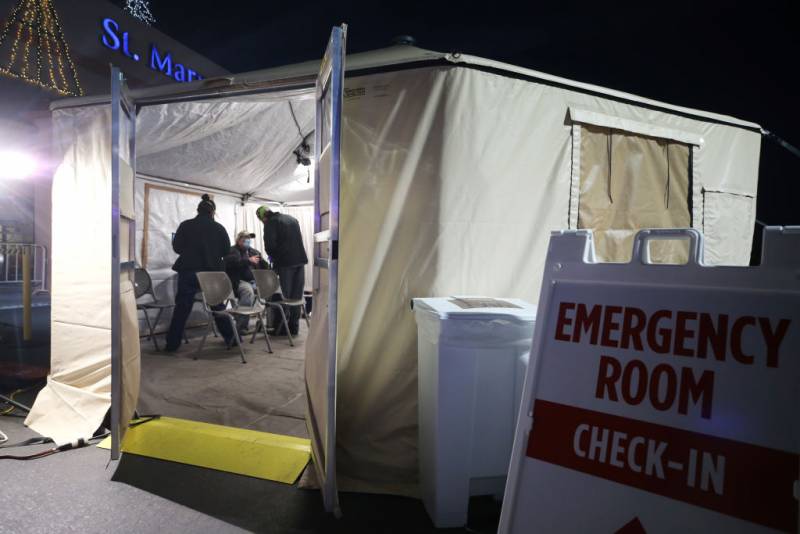This time, many hospitals are postponing procedures that are not emergencies, said Jan Emerson-Shea, a spokeswoman for the California Hospital Association. California also has opened alternative care facilities for people with less serious illnesses to save hospital beds for the sickest patients.
That also means hospitals have fewer nurses to deploy to ICUs from other units, UCSF’s Coffman said. And many health workers became infected or have had to quarantine because they were exposed to someone with COVID-19 during the surge, she said.
Another factor is the dip in the number of nurses 60 and older. In a survey of the state’s 320,000 registered nurses, many older nurses told researchers at UCSF’s Healthforce Center that they stopped working out of concern for their or their family’s health, said Joanne Spetz, the center’s associate director of research.
On Monday, more than 17,000 people were hospitalized with confirmed COVID-19 infections — more than double the previous peak reached in July — and a state model that uses current data to forecast future trends shows the number could reach nearly 100,000 by January. More than 3,600 COVID-19 patients were in intensive care units.
Ghaly said entire areas of California may run out of room even in surge capacity units “by the end of the month and early in January.” The state is trying to avoid that by opening makeshift hospitals in places like gymnasiums, tents and a vacant NBA arena, and sending patients to parts of the state with empty beds.
This past spring, Newsom sought to reinforce fatigued medical workers by creating a paid volunteer network, but with cases skyrocketing now, just 28 members are working at 13 facilities despite pleas for more retired medical professionals to sign up.
The state is updating its planning guide for how hospitals would ration care if necessary.
A document recently circulated among doctors at the four hospitals run by Los Angeles County calls for them to shift strategy: Instead of trying everything to save a life, their goal during the crisis is to save as many patients as possible. Those less likely to survive would not get the same kind of care offered in normal times.
Houze, the ICU nurse, said her online community of nurses is offering webinars about moral distress because many of them have had to change the way they care for patients.
“The patients that aren’t yet intubated, and even the ones intubated, aren’t getting the kind of nursing care that I want to give them because our resources are so limited and time is taxed,” she said. “It’s really disheartening.”
Associated Press reporter Don Thompson in Sacramento contributed to this report.
